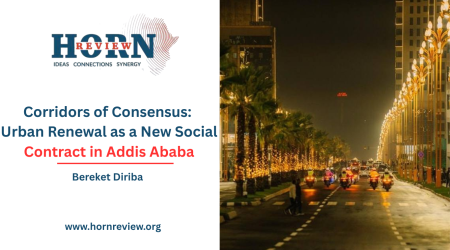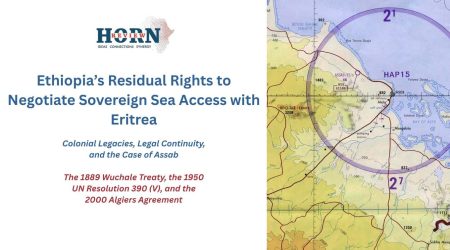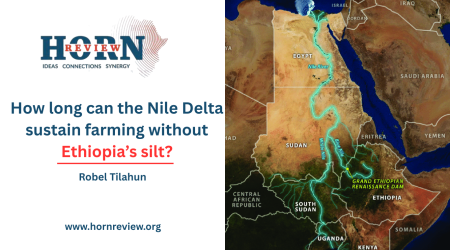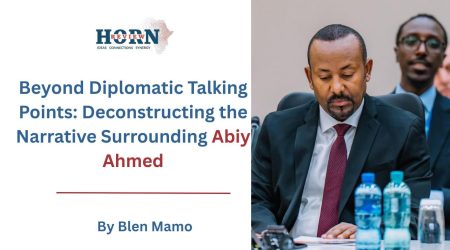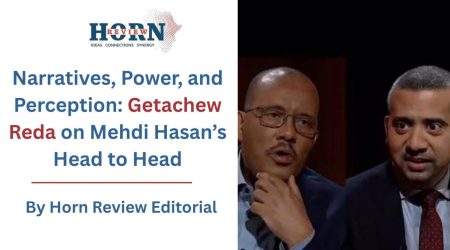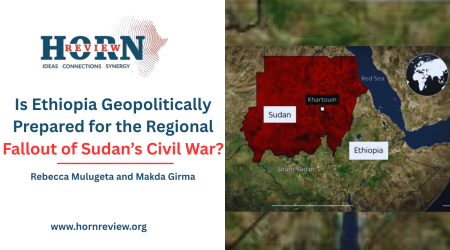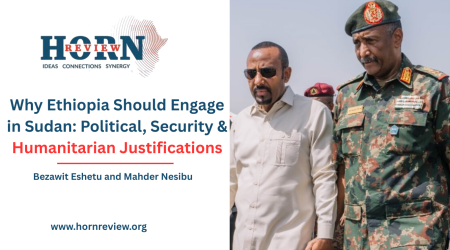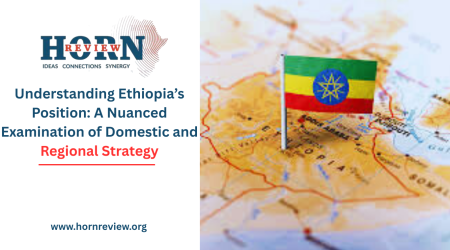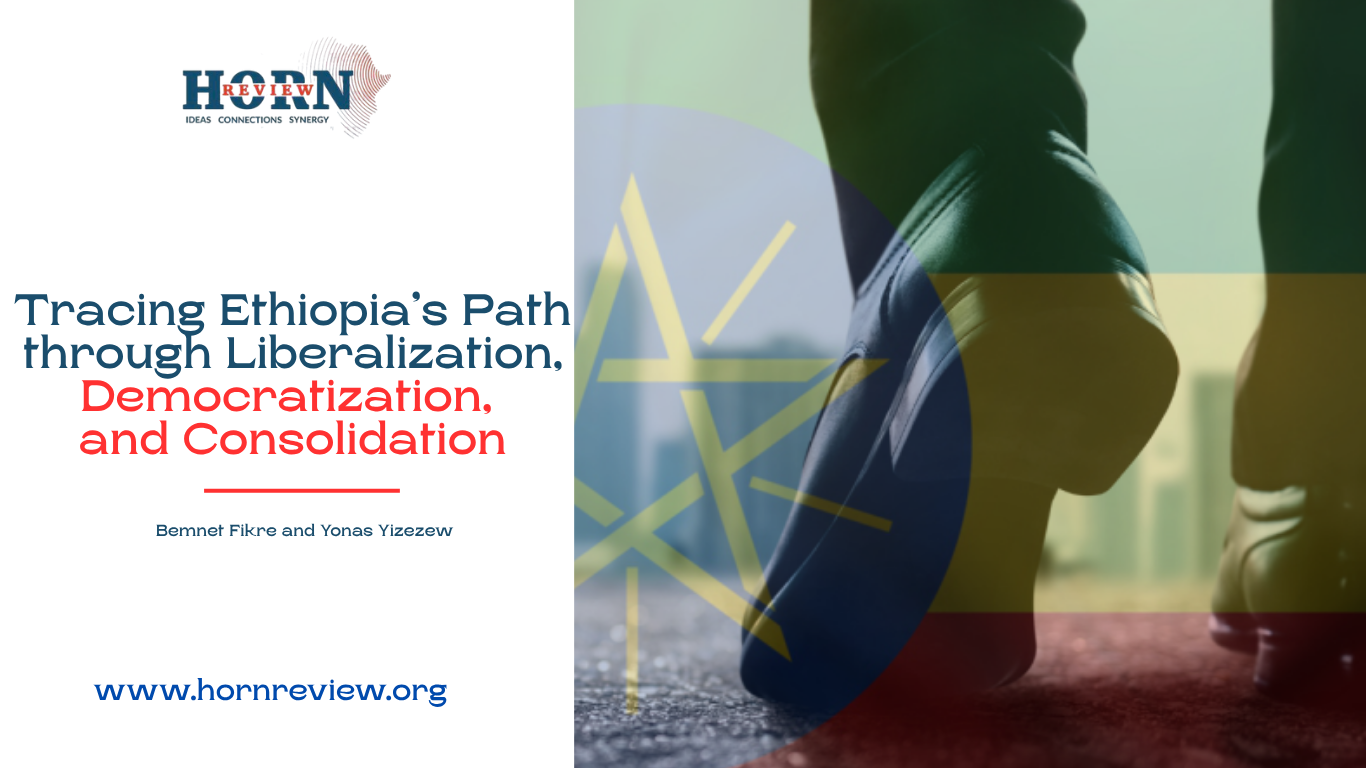
11
Oct
Tracing Ethiopia’s Path through Liberalization, Democratization, and Consolidation
Ethiopia’s contemporary political evolution represents a complex and multifaceted process marked by perseverance and profound aspiration for transformation. Political transition is inherently nonlinear, characterized by a dynamic interplay of challenges and opportunities that collectively shape the trajectory of a nation. Such transitions are conceptualized in three sequential phases: liberalization, democratization, and ultimately, consolidation. Liberalization marks the opening of political space where authoritarian restrictions begin to loosen, civil liberties expand, and political dissent is tolerated. Democratization involves a more formal shift in political power, typically through founding elections, constitutional reform, and the restructuring of state institutions. The final and most demanding phase is Consolidation, where democratic norms are internalized, institutions gain legitimacy, and power transfers occur regularly, peacefully, and within agreed-upon rules. Nowhere is this arc more vivid than in Ethiopia’s own surge of reform after 2018.
Prior to that, in 1991, following the demise of the Derg regime, the Ethiopian People’s Revolutionary Democratic Front (EPRDF) assumed power, maintaining a tight grip on national politics for nearly three decades. This coalition, heavily dominated by the Tigray People’s Liberation Front (TPLF), systematically consolidated control over various organs.
Subsequently, the contested 2005 general election exposed the regime’s overpowering grip over security forces, with protests met with live ammunition. This demonstrated early on that without genuine political liberties, technical frameworks for democracy were hollow façades.
Two decades later, Hailemariam Desalegn’s 2018 resignation opened a narrow reform window that Abiy Ahmed moved swiftly to seize. Upon assuming office, he initiated a series of transformative liberalization reforms, generating considerable excitement and international acclaim. His administration secured the release of thousands of political prisoners, dissidents, and journalists, both within Ethiopia and from abroad. A significant step towards broadening the political space was taken.
Furthermore, the Ethiopian parliament removed the Oromo Liberation Front (OLF), Ginbot 7, and the Ogaden National Liberation Front (ONLF) from the country’s list of terrorist organizations, inviting them to return from exile and engage in peaceful political activities. These political measures were complemented by plans for economic and political liberalization. The swiftness and breadth of these reforms initially fostered widespread public euphoria.
However, the Ethiopian experience validates the theoretical insight that liberalization creates what are termed as “soft-liners” and “hard-liners” within both administration and opposition forces. Abiy’s rise represented the ascendancy of soft-liners within the EPRDF, but the resistance from the TPLF and subsequent conflicts illustrated how hard-liner factions can derail liberalization processes.
Even after 2020, the TPLF’s deep roots in the security sector and its ethno-nationalist base meant that any shift in federal power would inevitably expose these security vulnerabilities, as evidenced by the Tigray conflict afterwards. This suggests that the security sector was not a neutral state apparatus but a highly politicized and ethnically aligned entity, making its fundamental reform a prerequisite for stable liberalization.
Decades of TPLF control over the federal security apparatus left intact when returning armed groups were neither disarmed nor reintegrated directly precipitated the Tigray conflict and ongoing insurgencies. The paradox of rapid liberalization in a tenuous state became apparent, as swift reforms, while initially generating optimism, inadvertently unleashed centrifugal forces and exacerbated ethnic tensions in a deeply fractured society. The public’s euphoria and demand for quick implementation likely amplified these pressures, creating a vacuum that pre-existing societal divisions rushed to fill.
This volatile aftermath sets the stage for the second phase, democratization, where the challenge shifts from opening space to negotiating the very rules and institutions that will govern Ethiopia’s future. In classical transition theory, particularly the framework advanced by Guillermo O’Donnell and Philippe Schmitter, democratization is not a linear path but a contentious, negotiated reordering of power between reformers and hardliners, incumbents and insurgents, and, crucially, between state institutions and society. Ethiopia’s post-2018 transition fits squarely into this contested model. After a sweeping liberalization phase that released political pressure and created space for competition, the democratization phase in Ethiopia has exposed entrenched conflicts, underdeveloped institutionalization, and unresolved security dilemmas, proving that democratization is neither automatic nor guaranteed.
Building on this fraught backdrop, the government has embarked on a concerted push to institutionalize democratic norms and recalibrate the security sector. Steps are now underway to address these shortcomings: although the premature political opening without prior control over coercive institutions initially created a security vacuum that rival elites exploited and left democratization efforts uneven and make reform process burdensome.
Several prerequisites Ethiopia must meet to advance beyond its current transitional limbo toward genuine democratic consolidation. First, the establishment of ‘pacted’ arrangements among major political forces. This requires genuine negotiations between the federal government, regional authorities, and opposition forces to establish agreed-upon rules for political competition that all parties accept as legitimate. The current National Dialogue process, theoretically aligned with this approach, is the necessary platform for effective pact-making.
Several interconnected factors impede Ethiopia’s progression toward the consolidation phase of democratization. The persistence of ethnic-based politics and conflicts represents a fundamental challenge to national unity and institutional stability.
To progress toward genuine democratization and eventual consolidation, Ethiopia must address several critical areas. Institutional reform remains paramount. For instance, the proposed transition to a proportional representation electoral system could significantly enhance political competition and representation, providing opposition parties with meaningful opportunities to participate in governance. The national dialogue initiative again, while facing various challenges, offers a potential framework for addressing historical grievances and building consensus on the country’s political future.
Ultimately, Ethiopia’s path toward democratic consolidation will depend on the ability of political elites to transcend narrow ethnic and partisan interests in favor of national unity and institutional development. The theoretical insights of democratization suggest that successful transitions require not only institutional reforms but also changes in political culture and elite behavior. Ethiopia’s experience demonstrates both the possibilities and limitations of reform-driven transitions, offering lessons for understanding democratization in contexts of ethnic diversity and institutional weakness.
By Bemnet Fikre and Yonas Yizezew , Researchers, Horn Review
References
Schneider, C. Q., & Schmitter, P. C. (2004). Liberalization, transition and consolidation: Measuring the components of democratization. Democratization, 11(5), 59–90.
Gudina, M. (2005). The State, Competing Ethnic Nationalisms and Democratisation in Ethiopia. African Journal of Political Science, 9, 27-50.
Fiseha, A. (2021). Transition to Democracy in Deeply Divided Ethiopia: Mission Impossible? Journal of Global South Studies, 39, 257 – 301.
Gebreyesus, T. (2024). When Democratic Transition Leads to Anarchy: Lessons from Ethiopia. Afrika Focus, 37(2), 332–355.

